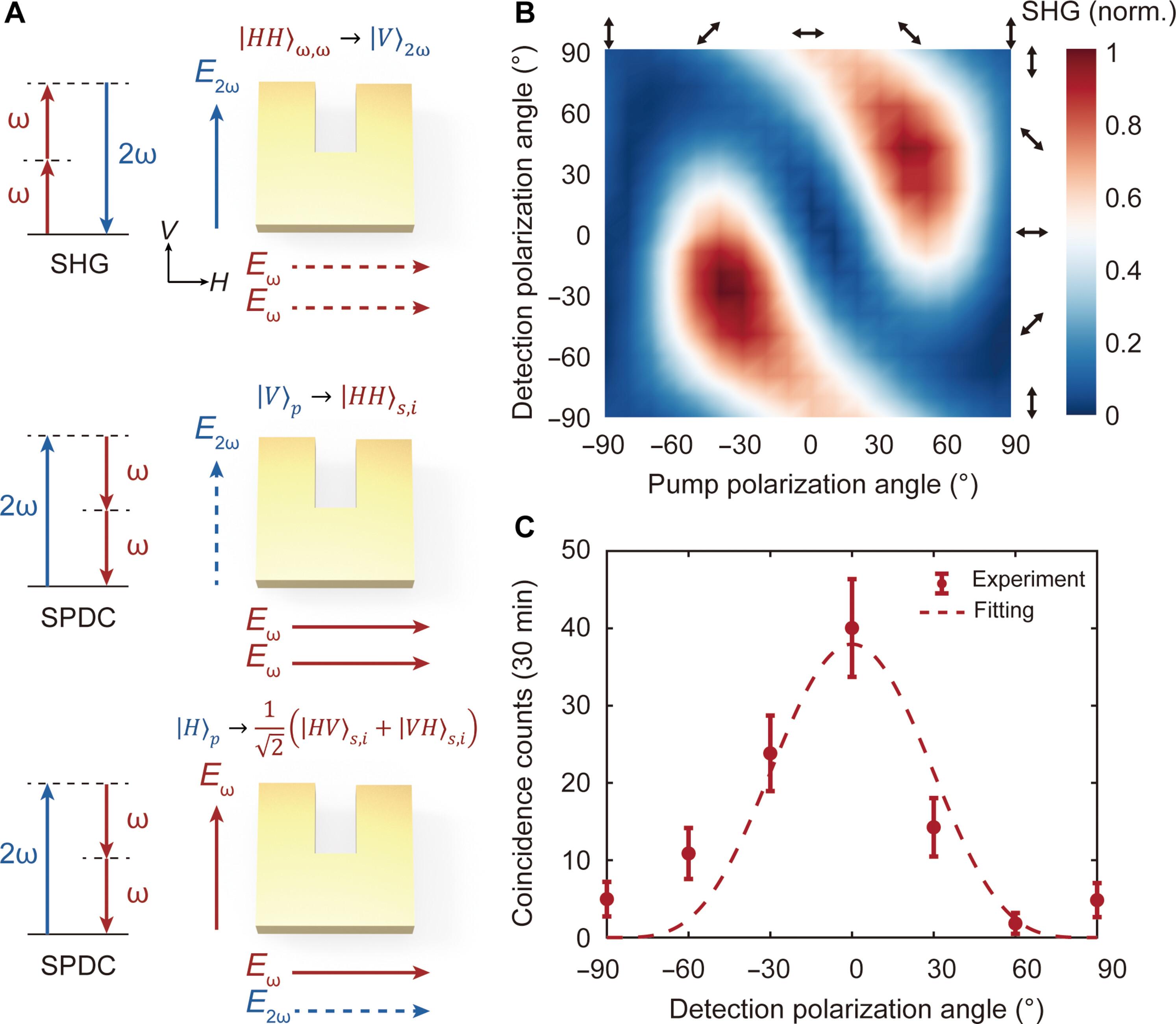从ε-近零元表面生成偏振纠缠的贝尔态
IF 12.5
1区 综合性期刊
Q1 MULTIDISCIPLINARY SCIENCES
Science Advances
Pub Date : 2025-02-21
引用次数: 0
摘要
偏振纠缠光子对各种量子技术都很重要,如量子通信、计算和成像。然而,产生复杂的极化纠缠态长期以来一直受到天然材料可用的非线性磁化率张量的限制,需要繁琐的附加相干叠加或后选择设置。在这项研究中,我们通过实验证明了使用与epsilon-near-zero (ENZ)材料强耦合的等离子体超表面产生极化纠缠光子对。通过在泵浦波长处设计共振并利用ENZ效应提供的场增强,68纳米厚的超表面的光子对产生效率大大提高,与无图案氧化铟锡薄膜相比。更值得注意的是,ENZ超表面平台促进了对系统各向异性二阶非线性磁化率张量的通用操作,从而可以直接控制光子对的偏振态,并在没有额外组件的情况下产生偏振纠缠的贝尔态。这种方法可以在一个紧凑的平台上同时产生光子对和量子态工程。本文章由计算机程序翻译,如有差异,请以英文原文为准。

Polarization-entangled Bell state generation from an epsilon-near-zero metasurface
Pairs of polarization-entangled photons are important for diverse quantum technologies, such as quantum communication, computation, and imaging. However, generating complex polarization-entangled states has long been constrained by the available nonlinear susceptibility tensor of natural materials, necessitating cumbersome setups for additional coherent superposition or postselection. In this study, we experimentally demonstrate the generation of pairs of polarization-entangled photons using a plasmonic metasurface strongly coupled to an epsilon-near-zero (ENZ) material. By engineering a resonance at the pump wavelength and leveraging the field enhancement provided by the ENZ effect, the photon pair generation efficiency of the 68-nanometer-thick metasurface is substantially boosted compared to that of an unpatterned indium tin oxide film. More notably, the ENZ metasurface platform facilitates versatile manipulation of the system’s anisotropic second-order nonlinear susceptibility tensor, enabling direct control over the polarization states of the photon pairs and generating a polarization-entangled Bell state without additional components. This approach enables simultaneous photon pair generation and quantum state engineering in a compact platform.
求助全文
通过发布文献求助,成功后即可免费获取论文全文。
去求助
来源期刊

Science Advances
综合性期刊-综合性期刊
CiteScore
21.40
自引率
1.50%
发文量
1937
审稿时长
29 weeks
期刊介绍:
Science Advances, an open-access journal by AAAS, publishes impactful research in diverse scientific areas. It aims for fair, fast, and expert peer review, providing freely accessible research to readers. Led by distinguished scientists, the journal supports AAAS's mission by extending Science magazine's capacity to identify and promote significant advances. Evolving digital publishing technologies play a crucial role in advancing AAAS's global mission for science communication and benefitting humankind.
 求助内容:
求助内容: 应助结果提醒方式:
应助结果提醒方式:


